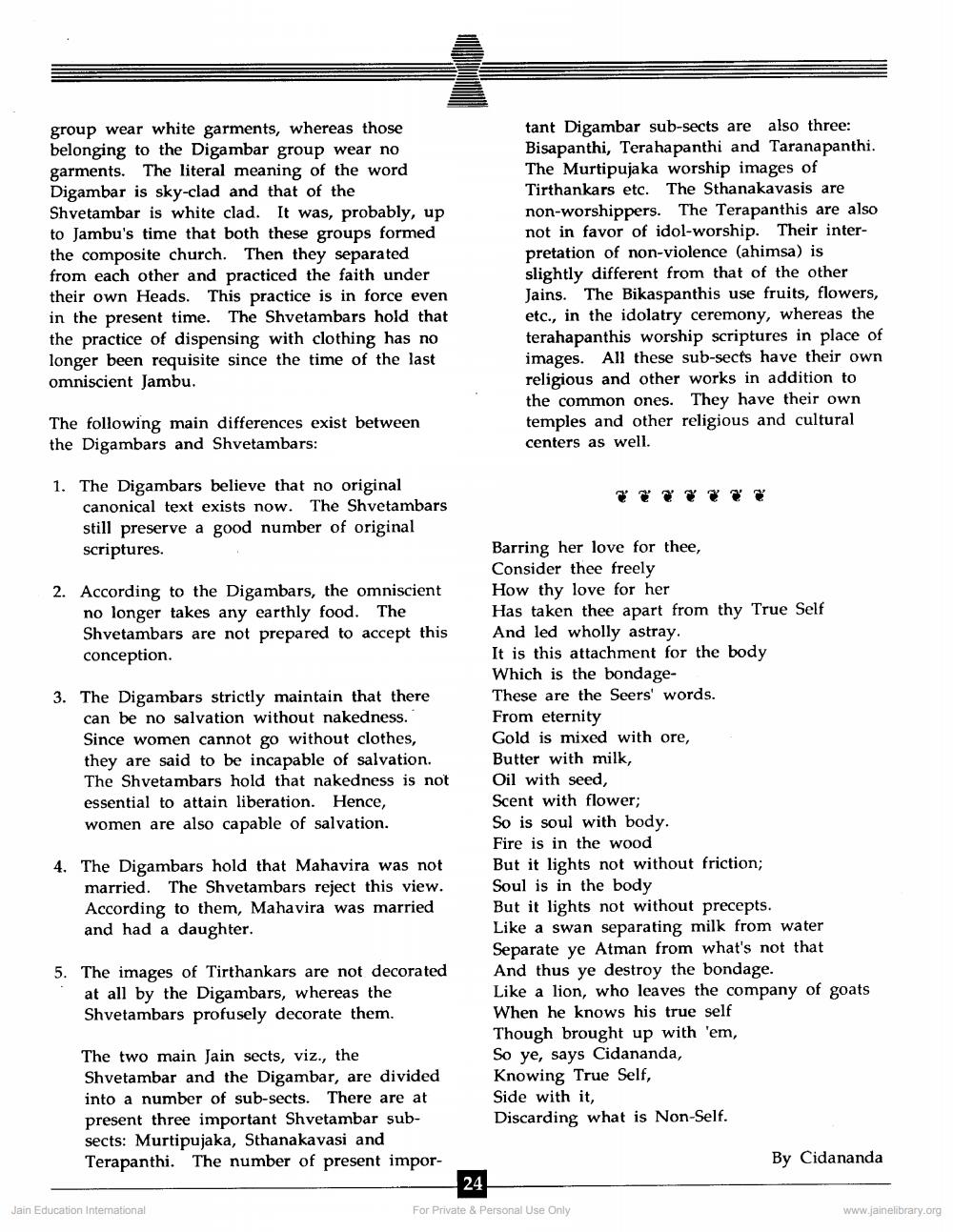________________
group wear white garments, whereas those belonging to the Digambar group wear no garments. The literal meaning of the word Digambar is sky-clad and that of the Shvetambar is white clad. It was, probably, up to Jambu's time that both these groups formed the composite church. Then they separated from each other and practiced the faith under their own Heads. This practice is in force even in the present time. The Shvetambars hold that the practice of dispensing with clothing has no longer been requisite since the time of the last omniscient Jambu.
tant Digambar sub-sects are also three: Bisapanthi, Terahapanthi and Taranapanthi. The Murtipujaka worship images of Tirthankars etc. The Sthanakavasis are non-worshippers. The Terapanthis are also not in favor of idol-worship. Their interpretation of non-violence (ahimsa) is slightly different from that of the other Jains. The Bikaspanthis use fruits, flowers, etc., in the idolatry ceremony, whereas the terahapanthis worship scriptures in place of images. All these sub-sects have their own religious and other works in addition to the common ones. They have their own temples and other religious and cultural centers as well.
The following main differences exist between the Digambars and Shvetambars:
1. The Digambars believe that no original
canonical text exists now. The Shvetambars still preserve a good number of original scriptures.
2. According to the Digambars, the omniscient
no longer takes any earthly food. The Shvetambars are not prepared to accept this conception.
3. The Digambars strictly maintain that there
can be no salvation without nakedness. Since women cannot go without clothes, they are said to be incapable of salvation. The Shvetambars hold that nakedness is not essential to attain liberation. Hence, women are also capable of salvation.
Barring her love for thee, Consider thee freely How thy love for her Has taken thee apart from thy True Self And led wholly astray. It is this attachment for the body Which is the bondageThese are the Seers' words. From eternity Gold is mixed with ore, Butter with milk, Oil with seed, Scent with flower; So is soul with body. Fire is in the wood But it lights not without friction; Soul is in the body But it lights not without precepts. Like a swan separating milk from water Separate ye Atman from what's not that And thus ye destroy the bondage. Like a lion, who leaves the company of goats When he knows his true self Though brought up with 'em, So ye, says Cidananda, Knowing True Self, Side with it, Discarding what is Non-Self.
4. The Digambars hold that Mahavira was not
married. The Shvetambars reject this view. According to them, Mahavira was married and had a daughter.
5. The images of Tirthankars are not decorated
at all by the Digambars, whereas the Shvetambars profusely decorate them.
The two main Jain sects, viz., the Shvetambar and the Digambar, are divided into a number of sub-sects. There are at present three important Shvetambar subsects: Murtipujaka, Sthanakavasi and Terapanthi. The number of present impor
By Cidananda
241
Jain Education Intemational
For Private & Personal Use Only
www.jainelibrary.org




